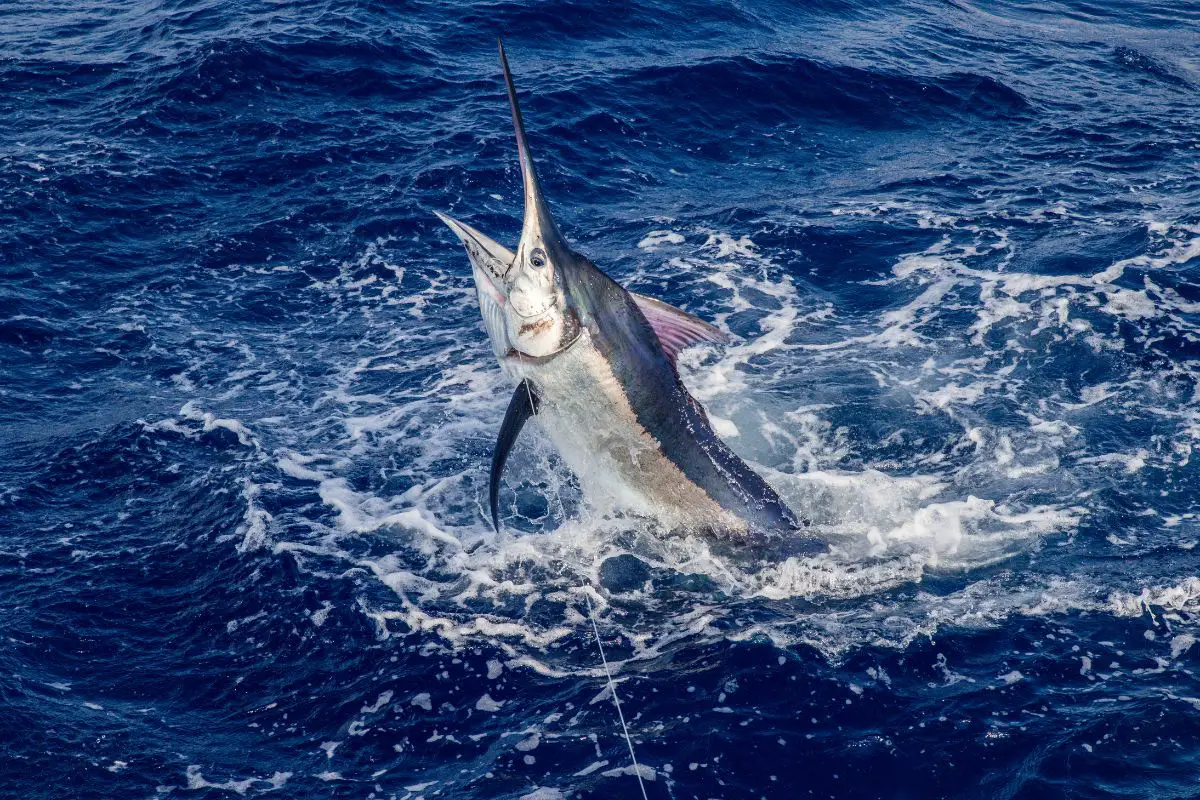
Do you like deepsea fishing? If you answered yes, then you would love to catch a marlin! Marlins are one of the most popular fish to catch because they put up such a fight.
They’re also delicious! If you can’t seem to find a marlin, don’t worry. There are plenty of other fish in the sea that are similar to marlins.
In this article, we’ll introduce you to the top 10 fish similar to marlins. But first, let’s talk about the characteristics of a Marlin.
What is a Marlin?
Simply put, a Marlin is a fish. It has a long body with a spear-like bill. Marlins are considered to be one of the fastest and most agile fish in the sea. They’re also one of the most popular fish to catch for sport.
Marlins can grow to be quite large. The biggest on record was over 18 feet long and weighed over 1,000 pounds!
What Does A Marlin Look Like?
Marlins have a long, sleek body with a spear-like bill. They’re usually blue or bluish-green in color with a white belly. Some Marlins also have stripes or spots on their sides.
Marlins can grow to be quite large. The biggest on record was over 18 feet long and weighed over 1,000 pounds! Some variations on Marlin appearance include:
- The Blue Marlin – This is the most common type of Marlin. It has a long, slender body with a spear-like bill. The Blue Marlin is blue or bluish-green in color with a white belly. It can grow to be over 14 feet long and weigh over 1,000 pounds.
- The White Marlin – The White Marlin is similar in appearance to the Blue Marlin but it’s lighter in color. It has a long, slender body with a spear-like bill. The White Marlin is white or silver in color with a light-colored belly. It can grow to be over 12 feet long and weigh over 200 pounds.
- The Striped Marlin – The Striped Marlin is similar in appearance to the Blue and White Marlins. It has a long, slender body with a spear-like bill. The Striped Marlin is blue or bluish-green in color with light stripes running down its sides. It can grow to be over 14 feet long and weigh over 1,000 pounds.
- The Black Marlin – The Black Marlin is similar in appearance to the Blue and White Marlins. It has a long, slender body with a spear-like bill. The Black Marlin is black or dark blue in color with a white belly. It can grow to be over 16 feet long and weigh over 1,000 pounds.
What is the Marlin’s habitat?
Marlins live in the open ocean. They can be found in tropical and subtropical waters around the world. Marlins are often found near the surface of the water but they can also dive to depths of over 3,000 feet.
Marlins migrate long distances every year. Some Marlins have been known to travel over 16,000 miles in a single year!
What is the Marlin’s diet?
Marlins are predators. They eat fish, squid, and crustaceans. Marlins use their long bills to stun their prey before eating them.
Marlins can eat up to 5% of their body weight each day.
What is the Marlin’s reproduction?
Marlins are spawned in the open ocean. They lay their eggs in long, thin strands that float in the water. Marlins can lay up to 10 million eggs at a time!
The eggs hatch after about two weeks. The young Marlins are called “fry”. The fry grow quickly.
They can reach lengths of 6 feet in just one year.
What is the Marlin’s lifespan?
Marlins can live for up to 20 years in the wild.
What are the Marlin’s predators?
The main predators of Marlins are sharks and killer whales. Marlins are also sometimes caught by humans. Marlins are a popular fish to catch for sport.
Now that you know a little bit about Marlins, let’s take a look at some other fish that are similar to them.
1. Sailfish
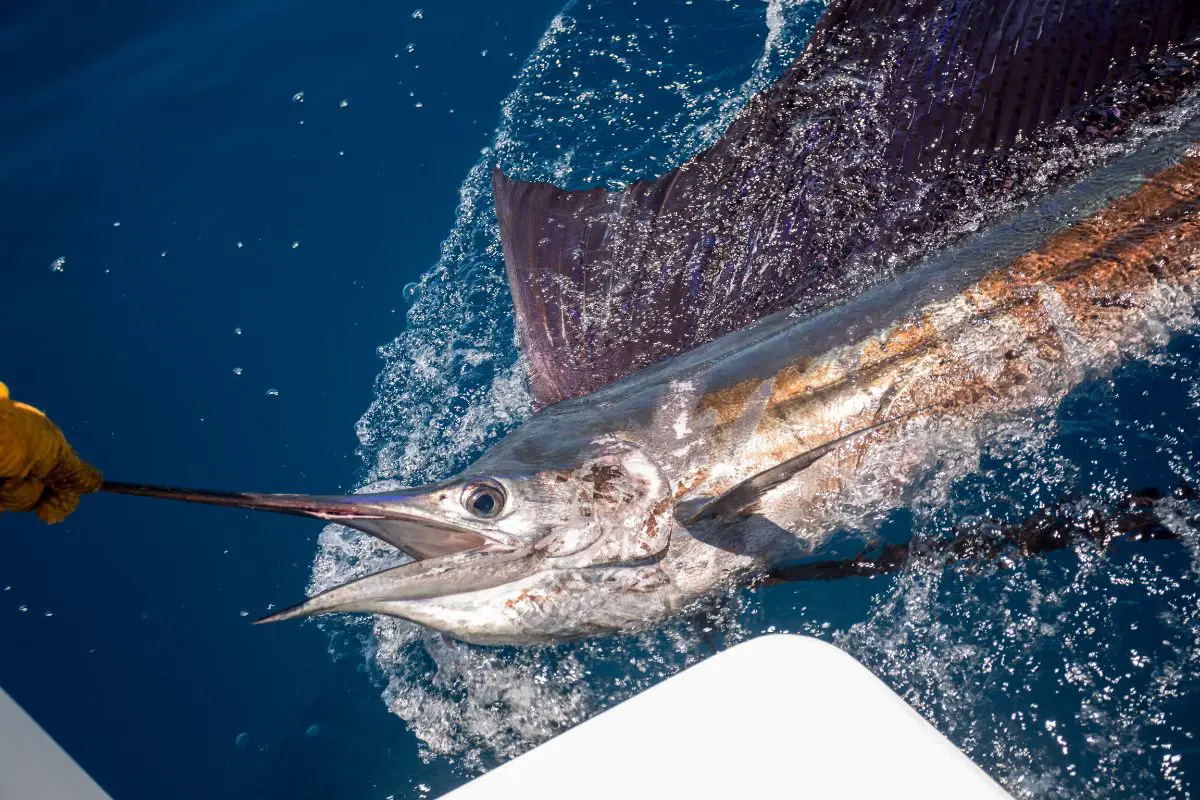
A sailfish is a fish of the billfish family. This family also includes marlin, spearfish, and swordfish. Sailfish are one of the fastest fish in the ocean, able to swim up to 110 kilometers per hour.
What Does A Sailfish Look Like?
Sailfish grow to be about 1.2 to 1.8 meters long and can weigh up to 90 kilograms. They have a long, thin body with a very high dorsal (back) fin. The sailfish’s most distinguishing feature is its long bill, which can be up to one-third the length of its body.
Sailfish use their bills to slash at prey, stunning or killing them. Some variations on the sailfish include:
- The Atlantic sailfish, which is found in the Atlantic Ocean. The Atlantic sailfish looks like a typical sailfish, with a blue body and silver scales.
- The Pacific sailfish, which is found in the Pacific Ocean. The Pacific sailfish has a brownish-purple body with yellow spots.
- The Mediterranean sailfish, which is found in the Mediterranean Sea. The Mediterranean sailfish has a dark blue body with silver spots.
What is the Sailfish’s habitat?
The sailfish is found in tropical and subtropical waters around the world. They tend to prefer areas with a lot of seaweed or other underwater plants, as this provides them with shelter and camouflage. Sailfish are often found near the coasts, in bays, and in estuaries.
What is the Sailfish’s diet?
The sailfish’s diet consists mostly of smaller fish, squid, and crustaceans. Sailfish use their long bills to slash at schools of small fish, stunning or killing them. They will then swim through the school, swallowing their prey whole.
What is the Sailfish’s reproduction?
Sailfish are born in the open ocean. After they are born, they swim to the coastline and spend their first few years of life in shallow waters. As they mature, sailfish head back out into the open ocean.
Sailfish reproduce by spawning. This means that the female will release her eggs into the water, and the male will fertilize them. The eggs will then float to the surface, where they will hatch into baby sailfish.
What is the Sailfish’s lifespan?
Sailfish live for about 5 to 10 years.
What are the Sailfish’s predators?
The main predators of sailfish are other fish, such as tuna, sharks, and dolphins. Sailfish are also sometimes hunted by humans for their meat and for their bills, which are used to make sails for boats.
2. Swordfish
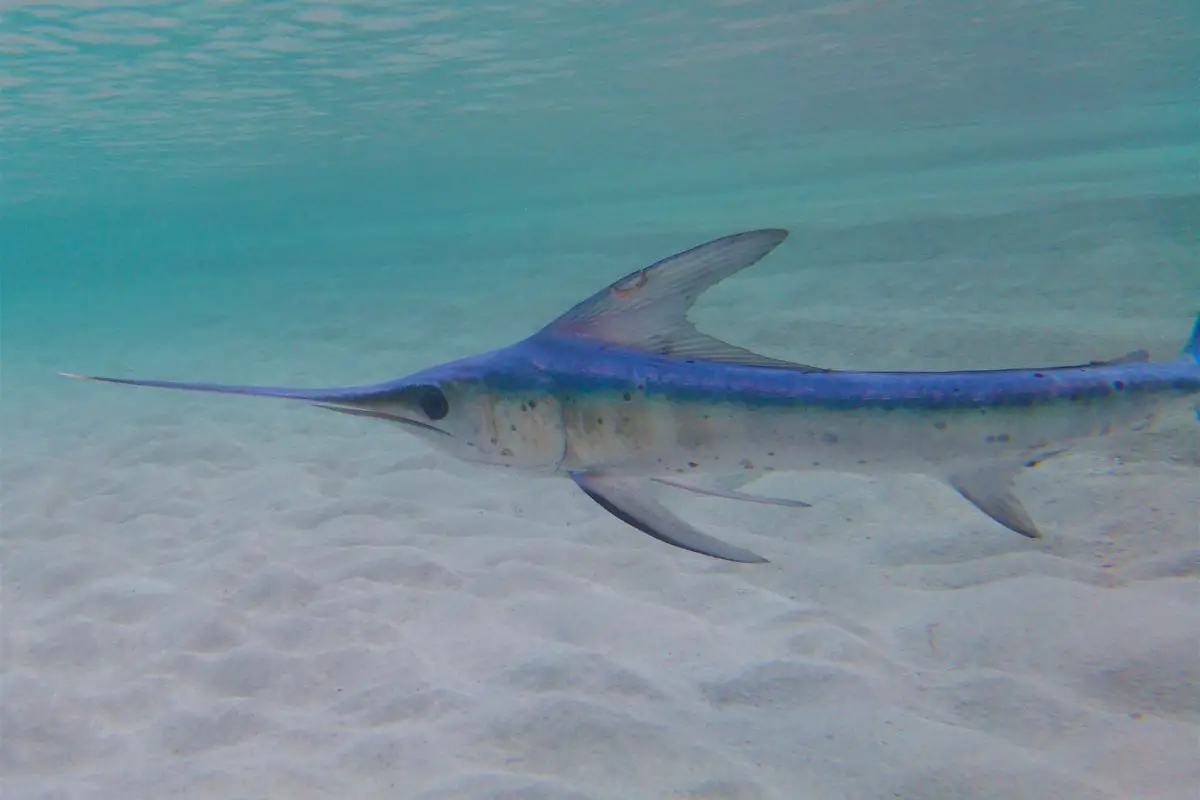
A swordfish is a fish of the billfish family.
What Does A Swordfish Look Like?
Swordfish grow to be about 1.8 to 4 meters long and can weigh up to 650 kilograms. They have a long, thin body with a very high dorsal (back) fin. The swordfish’s most distinguishing feature is its long bill, which can be up to one-third the length of its body and is flat and sword-like.
The swordfish uses its bill to slash at prey, stunning or killing them. Some variations of swordfish include:
- Striped swordfish is found in the western Atlantic Ocean. It has dark stripes running along its body and is the smallest of the swordfish species.
- Broadbill swordfish is found in the Indian and Pacific Oceans. It gets its name from its wide bill, which can be up to one-half the width of its body.
- Pacific blue marlin (a type of swordfish) is found in the Pacific Ocean. It is the largest of the swordfish species and can grow up to four meters long and weigh up to 770 kilograms.
What is the Swordfish’s habitat?
Swordfish are found in tropical and temperate waters around the world. They tend to prefer areas with a lot of seaweed or other underwater plants, as this provides them with shelter and camouflage.
What Do Swordfish Eat?
Swordfish are predators that eat a variety of fish, squid, and crabs. They use their bill to slash at prey, stunning or killing them. Swordfish are sometimes called “sea wolves” because they hunt in packs.
What Is The Swordfish’s Reproduction?
Swordfish reproduce by spawning. This means that the female will release her eggs into the water, and the male will fertilize them. The eggs will then float to the surface, where they will hatch into baby swordfish.
What Is The Swordfish’s Lifespan?
Swordfish live for about 5 to 10 years.
What are Swordfish predators?
Swordfish have few natural predators. Sharks, killer whales, and large tuna are some of the predators that will eat swordfish.
3. Bluefin Tuna
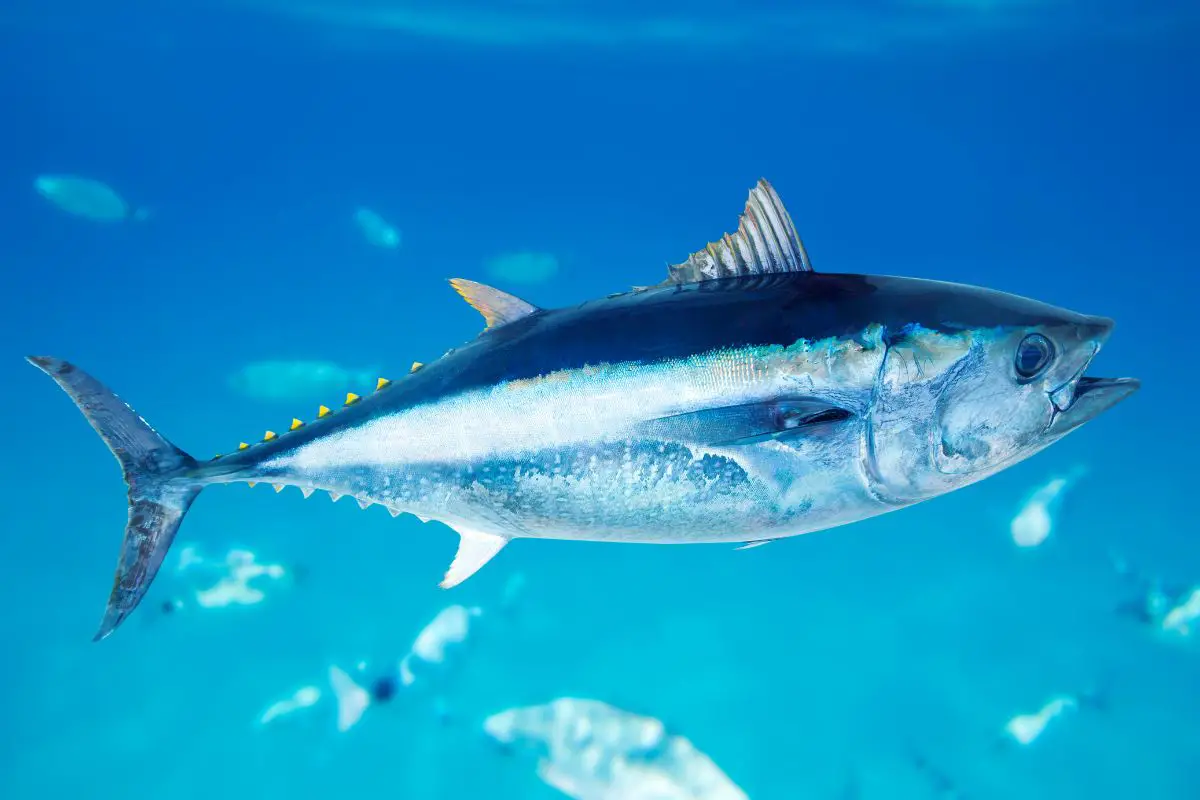
Bluefin tuna is a type of tuna that is found in the open waters of the Atlantic Ocean. It is one of the largest types of tuna, and can grow up to 10 feet long and weigh up to 2000 pounds. Bluefin tuna are popular for their meat, is used in sushi and sashimi.
The fish are also popular for their oil, which is used in cosmetics and supplements.
What Does A Bluefin Tuna Look Like?
The bluefin tuna is a large fish with a long, slender body. The fish has a dark blue back and upper sides, and a silver belly. The fins are also dark blue.
The fish has two main types of scales: large, flat scales on the upper body, and small, round scales on the lower body. The eyes of the bluefin tuna are large and black. The mouth is also large, and filled with sharp teeth.
The bluefin tuna is a fast swimmer, and can reach speeds of up to 50 miles per hour. The fish are often found in schools, and can live for up to 15 years. Some species of bluefin tuna include:
- Atlantic bluefin tuna which is found in the Atlantic Ocean.
- Pacific bluefin tuna which is found in the Pacific Ocean.
- Southern bluefin tuna which is found in the waters around Australia and New Zealand.
What is the Bluefin Tuna’s habitat?
The bluefin tuna is found in the open waters of the Atlantic, Pacific, and Southern oceans. The fish migrate long distances, and can often be found near the coasts of Japan, Korea, and China.
What is the Bluefin Tuna’s diet?
The bluefin tuna is a carnivore, and feeds on small fish, squid, and crustaceans. The fish are also known to eat larger prey, such as sharks and dolphins.
What is the Bluefin Tuna’s reproduction?
The bluefin tuna reproduces by spawning in warm waters. This means that the female releases eggs into the water, and the male fertilizes them. The eggs float in the water, and hatch into larvae after about two weeks.
The larvae then grow into juvenile fish, and eventually into adults. After about a year, the young fish are large enough to return to the warm waters where they were spawned.
What is the Bluefin Tuna’s lifespan?
The bluefin tuna can live for up to 15 years.
What are the Bluefin Tuna’s predators?
The bluefin tuna’s main predators are sharks, dolphins, and other large fish. Humans are also a major predator of the bluefin tuna, as the fish are popular for their meat.
4. Yellowfin Tuna
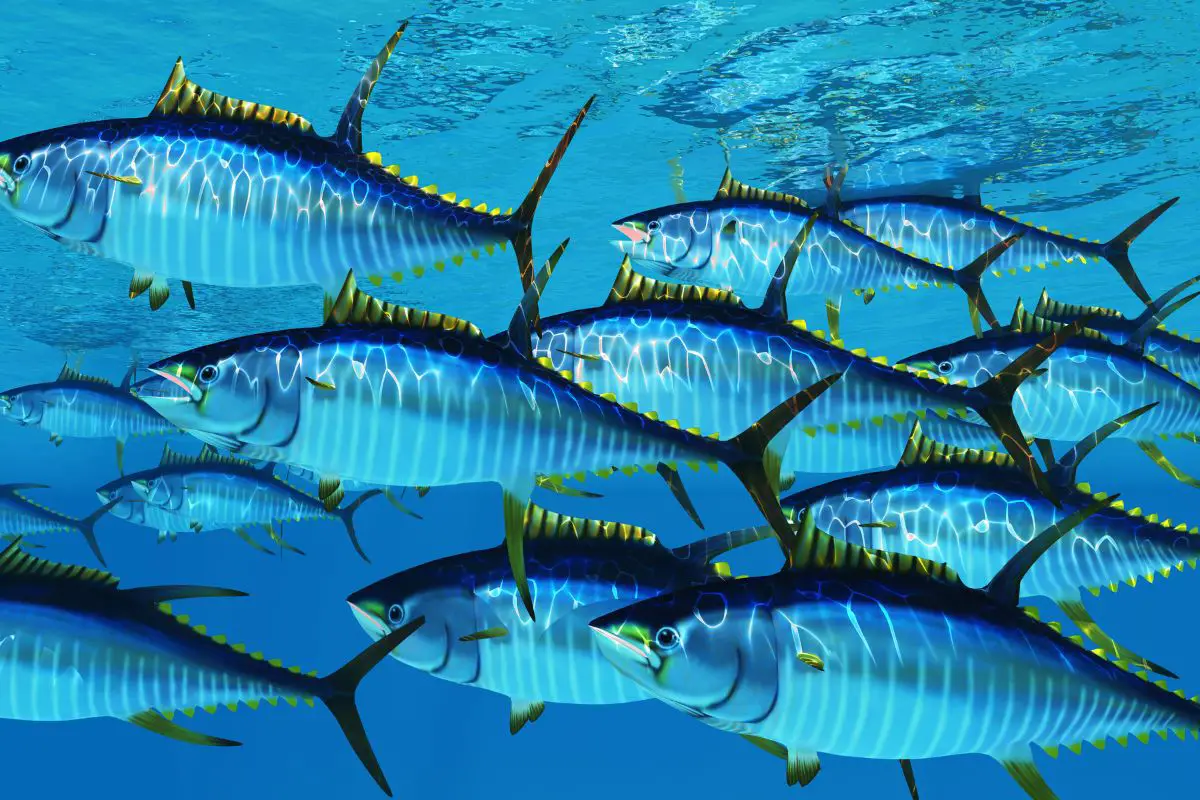
A yellowfin tuna is a species of tuna that is found in the pelagic waters of the tropical oceans. The yellowfin tuna is a fast swimmer and can reach speeds of up to 50 mph. The yellowfin tuna is an important commercial fish and is used for food and sport fishing.
What Does A Yellowfin Tuna Look Like?
The yellowfin tuna has a body shape that is similar to the marlin. The body of the yellowfin tuna is elongated and has a dark blue color on the back and upper sides. The lower sides and belly are silver in color.
The yellowfin tuna has a forked tail and can grow to be 6 feet long and weigh up to 400 pounds. Types of yellowfin tuna include:
- Bigeye tuna lives in the deep waters of the open ocean and can grow up to 10 feet long and weigh up to 1,000 pounds.
- Albacore tuna is a smaller tuna that is found in the pelagic waters of the Pacific and Atlantic oceans. Albacore tuna can grow up to 6 feet long and weigh up to 200 pounds.
What is the Yellowfin Tuna’s habitat?
The yellowfin tuna is a pelagic fish which means that it swims in the open waters of the ocean. The yellowfin tuna is found in tropical and subtropical waters around the world. The yellowfin tuna is an important commercial fish and is used for food and sport fishing.
The yellowfin tuna is a popular game fish and is prized for its excellent flavor. The yellowfin tuna is a fast swimmer and can reach speeds of up to 50 mph.
What is the Yellowfin Tuna’s diet?
The yellowfin tuna is a predatory fish and feeds on smaller fish, squid, and crustaceans. It hunts by swimming rapidly through schools of fish and uses its sharp teeth to snag its prey.
What is the Yellowfin Tuna’s reproduction?
Yellowfin tuna are pelagic spawners which means that they release their eggs into the open waters of the ocean. The eggs hatch into larvae and then grow into juvenile fish. Yellowfin tuna reach maturity at 3-5 years of age.
What is the Yellowfin Tuna’s lifespan?
The yellowfin tuna is a long-lived fish and can live for up to 20 years.
What are the Yellowfin Tuna’s predators?
The yellowfin tuna’s main predators are larger fish, sharks, and humans.
5. Mahi Mahi
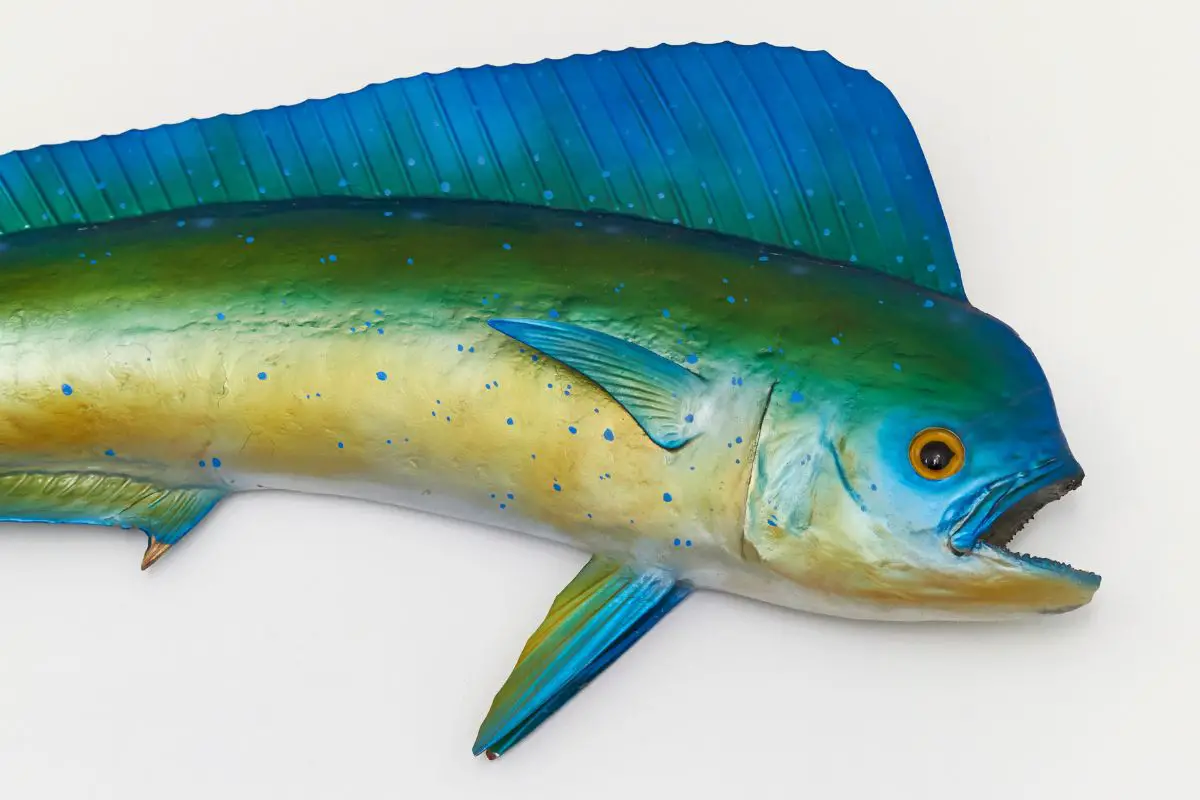
Mahi Mahi is another one of those saltwater fish that looks very similar to marlin. In fact, they are often confused for each other. Mahi Mahi can be found in tropical and subtropical waters all over the world.
They are a highly sought-after fish due to their tasty flesh.
What Does A Mahi Mahi Look Like?
Mahi Mahi have a very distinctive appearance. They are blue on the top half of their body and golden on the bottom half. They have a long, pointed nose and their dorsal fin is very tall.
Mahi Mahi can grow to be quite large, with some specimens reaching up to 8 feet in length weighing up to 90kg. Some species of Mahi Mahi include:
- Coryphaena hippurus lives in the Atlantic Ocean and can grow up to 6 feet in length.
- Coryphaena equisetis is found in the Indo-Pacific region and can reach lengths of 8 feet.
What is the Mahi Mahi’s habitat?
Mahi Mahi can be found in tropical and subtropical waters all over the world. They are often found near coral reefs, but they can also be found in open ocean waters.
What is the Mahi Mahi’s diet?
Mahi Mahi are opportunistic feeders, which means that they will eat just about anything they can find. Their diet consists of small fish, squid, and crustaceans.
What is the Mahi Mahi’s reproduction?
Mahi Mahi are oviparous, which means that they lay eggs. The female Mahi Mahi will release her eggs into the water, where they will be fertilized by the male. The eggs will hatch after about 24 hours.
The larvae of the Mahi Mahi will float around in the ocean for about a month before they settle to the bottom and begin to grow.
What is the Mahi Mahi’s lifespan?
The Mahi Mahi has a lifespan of about 5 years.
What are the Mahi Mahi’s predators?
Mahi Mahi have many predators, including sharks, tuna, and billfish.
6. Wahoo
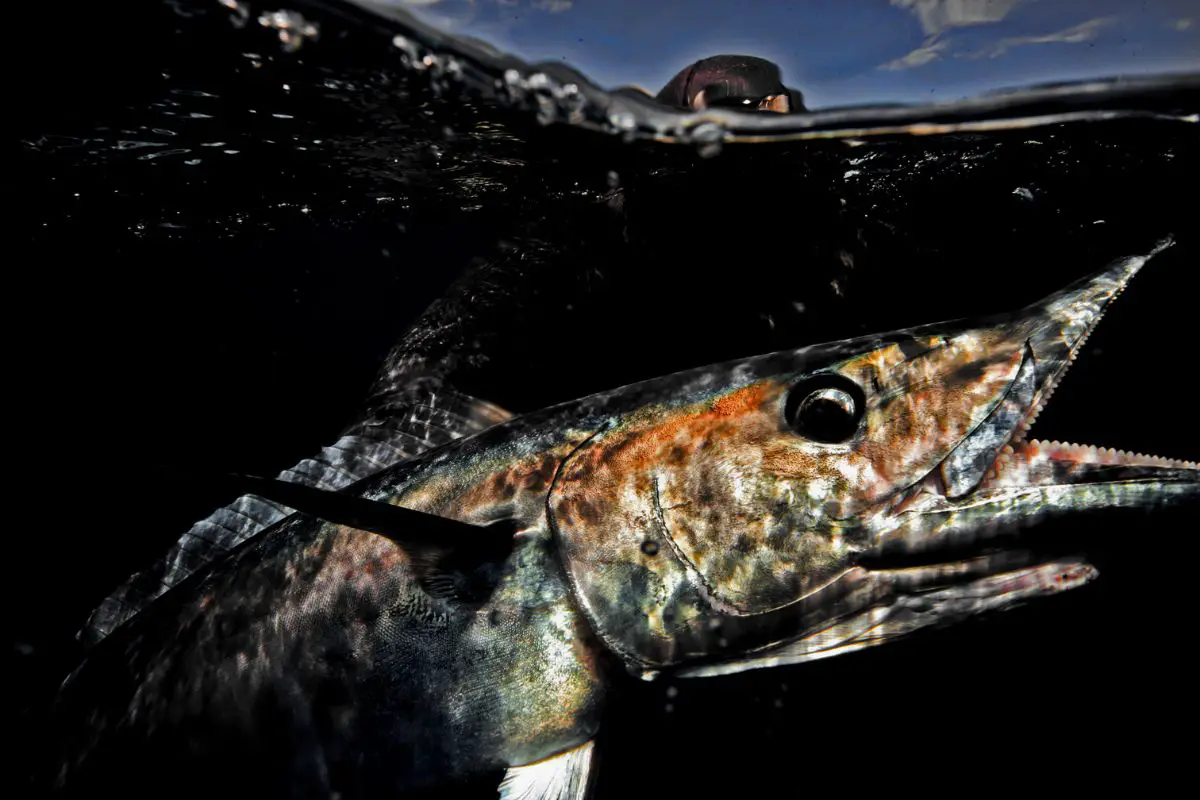
The Wahoo is a large fish that can be found in tropical waters around the world. It is an important food fish and is also popular among recreational anglers.
What Does A Wahoo Look Like?
The Wahoo has a long, slender body with a blue-green back and silver sides. It has a long, pointed head with large teeth. The Wahoo can grow to be over 6 feet (2 meters) long and weigh up to 200 pounds (90 kilograms).
Some species of Wahoo include:
- Atlantic Wahoo (Acanthocybium solandri) which lives in the Atlantic Ocean and looks like this:
- Pacific Wahoo (Acanthocybium pacificum) which lives in the Pacific Ocean and looks like this:
- Blackfin Wahoo (Acanthocybium petersi) which lives in the Indian Ocean and looks like this:
What is the Wahoo’s habitat?
The Wahoo lives in tropical and subtropical waters around the world. It is often found near reefs and in areas with a strong currents.
What is the Wahoo’s diet?
The Wahoo feeds on small fish, squid, and crustaceans.
What is the Wahoo’s reproduction?
The Wahoo is a pelagic fish, meaning that it does not lay eggs but gives birth to live young. The female Wahoo can give birth to up to 30 young at a time.
What is the Wahoo’s lifespan?
The Wahoo can live for up to 15 years.
What are the Wahoo’s predators?
The Wahoo’s main predators are sharks, dolphins, and tuna.
7. Dorado
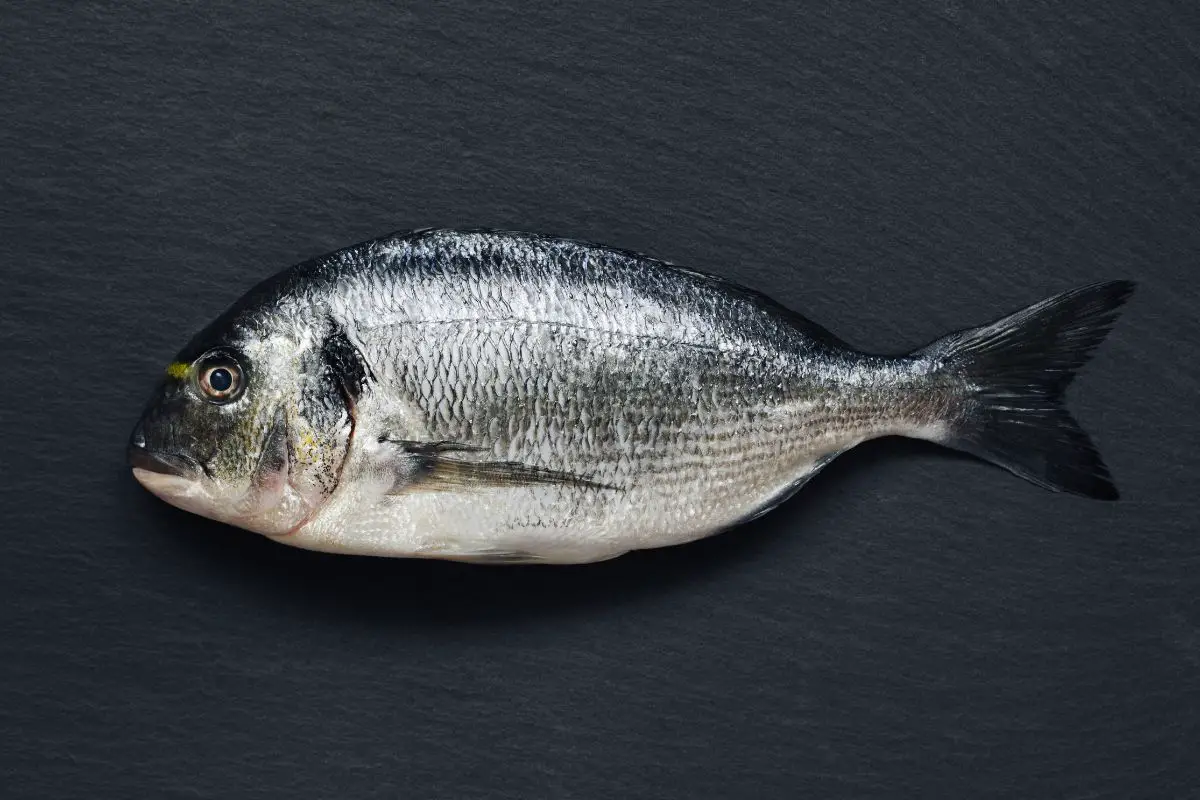
A Dorado is a ray-finned fish known for its dazzling colors and impressive fighting abilities. It’s also called Dolphin Fish, although it’s not related to dolphins. Dorado are relatively small fish, usually weighing in at around 20 pounds.
But don’t let their size fool you – they’re feisty fighters that put up a good fight when hooked. Dorado are found in tropical and subtropical waters around the world. They’re a popular game fish, prized for their delicious flesh.
Dorado are also a popular target for fly fishermen, as they’re not shy about taking a bait or lure.
What Does A Dorado Look Like?
Dorado are easily recognized by their bright, iridescent colors. They have a blue-green back, with golden yellow sides and a silvery belly. Their fins are also brightly colored, with shades of blue, green, and yellow.
Dorado have a long, pointed Bill that’s used for hunting prey. Some of the most common varieties of dorado include:
- The Common Dorado (Coryphaena hippurus), which is the most widespread and common type of dorado. It’s found in tropical and subtropical waters around the world.
- The Striped Dorado (Doratonotus megalepis), which is found in the eastern Pacific Ocean from California to Peru.
- The Golden Dorado (Salminus brasiliensis), which is found in freshwater rivers and lakes in South America.
What is the Dorado’s habitat?
Dorado are found in tropical and subtropical waters around the world. They prefer warm waters, and can be found in both offshore and inshore habitats. Dorado are often found near reefs, as they feed on the small fish that live there.
Dorado are pelagic fish, meaning they spend most of their time in the open water, far from the bottom of the ocean. They can be found at depths of up to 200 feet, but are most commonly found in waters between 20 and 50 feet deep.
What is the Dorado’s diet?
Dorado are predators that feed on small fish, squid, and crustaceans. They use their sharp teeth and long Bill to hunt down their prey. Dorado often school together, using teamwork to corral their prey into small groups before attacking.
Dorado are known for their voracious appetites, and will often eat much more than they need. This can be problematic for anglers, as dorado that are overfed will often refuse to bite.
What is the Dorado’s reproduction?
Dorado are spawning fish that reproduce by releasing eggs into the water. The eggs float in the water and are fertilized by the male dorado. Once they’re fertilized, the eggs hatch into larval dorado that spend the first few weeks of their lives floating in the ocean currents.
As they grow, dorado begin to migrate towards warmer waters. Once they reach maturity, they return to the waters where they were born to mate and reproduce.
What is the Dorado’s reproduction?
The average lifespan of a dorado is 5-7 years. However, some dorado have been known to live for up to 10 years in captivity.
What are the Dorado’s predators?
The main predators of dorado are larger fish, such as tuna and sharks. Humans are also a major predator of dorado, as they’re a popular game fish. Dorado have few natural predators due to their bright colors and impressive fighting abilities.
However, young dorado are often preyed upon by birds and small mammals.
8. Shark
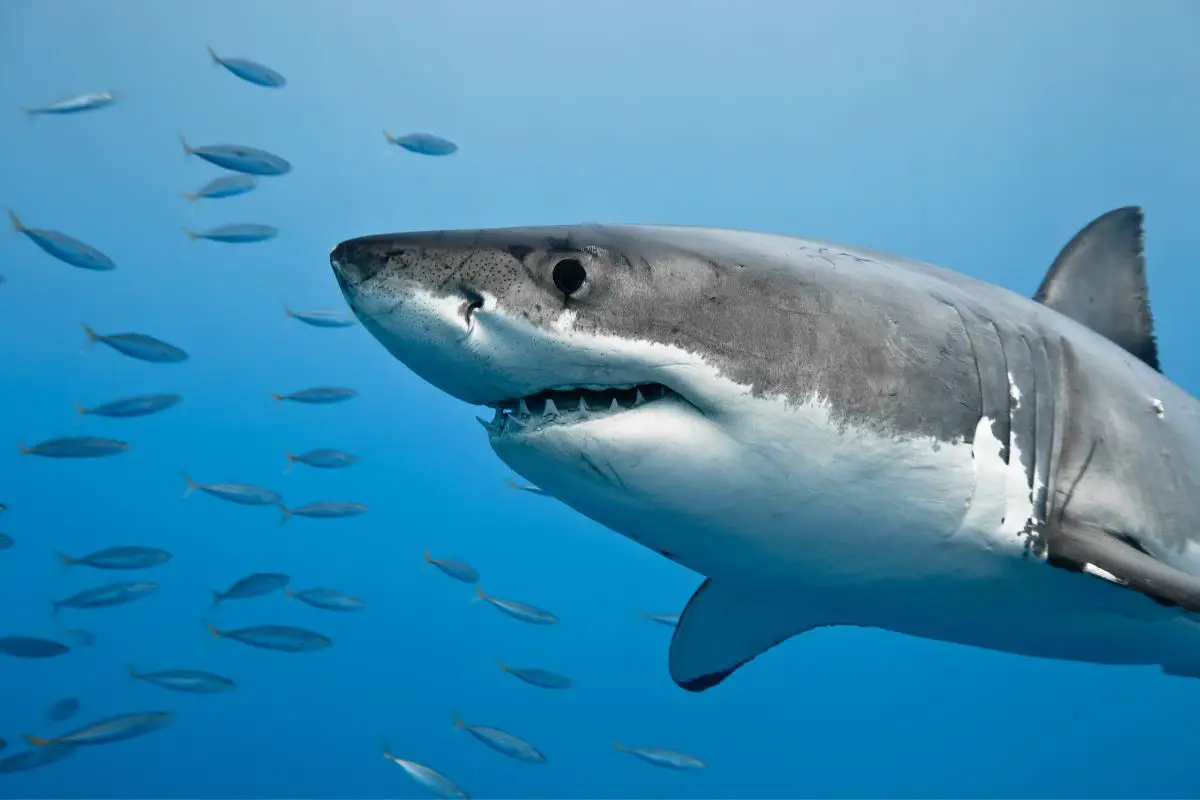
Sharks are predators and can be found in all oceans around the world. Sharks vary in size, with the largest being the whale shark which can grow up to 60 feet long! The smallest sharks are the dwarf lanternshark which only grows to be about 6 inches long.
What Does A Shark Look Like?
Sharks have a variety of different shapes and sizes, but all sharks have these common features:
- A streamlined body that helps them swim quickly
- Fins that help them change direction and stop
- Teeth that they use to catch their prey
Sharks are gray or brown on the top side of their body (called the dorsal side) and white on the bottom (called the ventral side). This coloration is called countershading and it helps sharks blend in with the water around them. Types of sharks that look like Marlin include:
- Great white sharks are found in all major oceans and can grow up to 20 feet long.
- Tiger sharks are found in warm waters around the world and can grow up to 16 feet long.
- Bull sharks are found in tropical and subtropical waters around the world and can grow up to 11.
What is the Shark’s habitat?
Sharks live in all oceans around the world. Some species of sharks live in shallow waters near the shore while others live in deep waters far from land.
What is the Shark’s diet?
Sharks are predators and their diet consists of fish, seals, turtles, and even dolphins. Some species of sharks filter feed on plankton and small fish.
What is the Shark’s reproduction?
Sharks are viviparous, meaning that they give birth to live young. Most species of sharks have between 2 and 10 pups per litter.
What is the Shark’s lifespan?
The average lifespan of a shark is 20-30 years, but some species can live up to 100 years!
What are the Shark’s predators?
The main predators of sharks are other sharks and humans. This is because sharks are at the top of the food chain and have no natural predators.
9. Barracuda
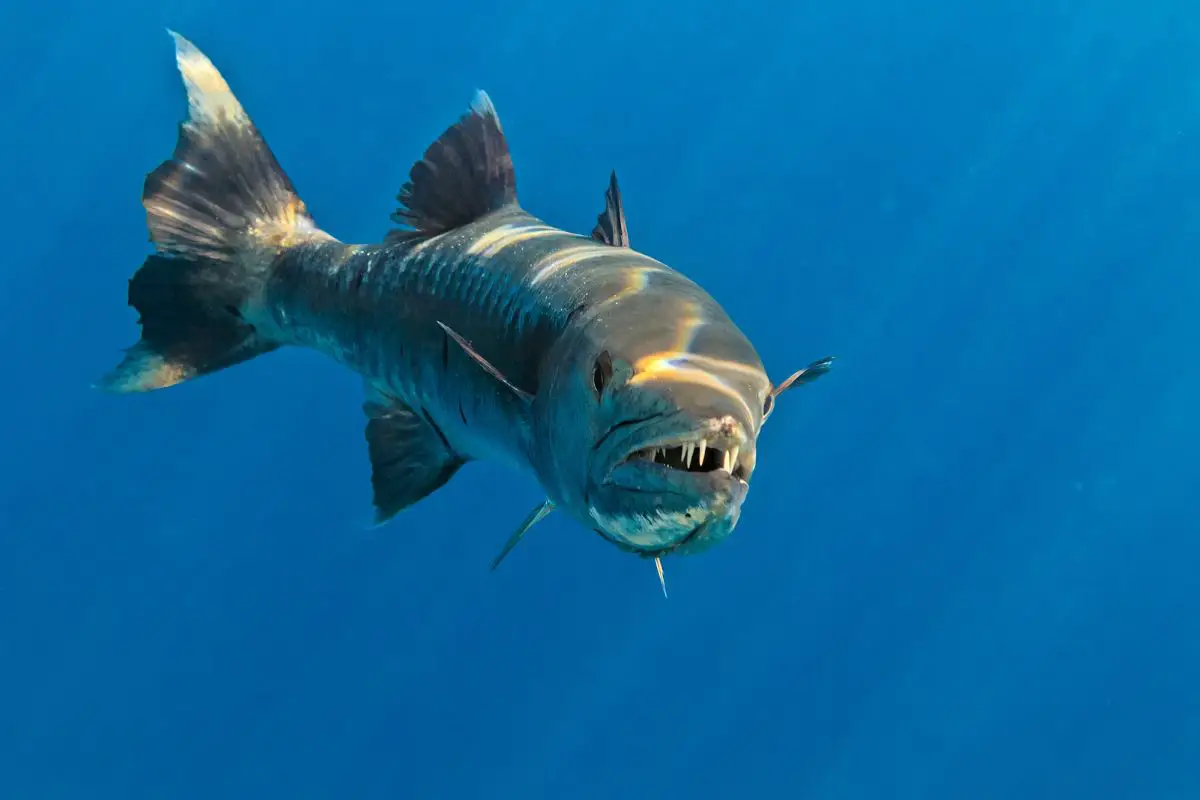
Barracudas are one of the most popular fish in the world. Barracudas are known for their large size and their ferocious appetite. They can grow up to 10 feet long and weigh over 200 pounds.
Barracudas are found in tropical and subtropical waters all over the world.
What Does A Barracuda Look Like?
Barracudas have a long, streamlined body with a large head. They have large teeth and a protruding lower jaw. Their back is greenish-blue or silver and their belly is white.
They have two dorsal fins and an anal fin. Some subspecies of barracuda include:
- Great barracuda (Sphyraena barracuda) which lives in tropical and subtropical waters all over the world.
- Giant barracuda (Sphyraena intimida) which is the largest barracuda and can grow up to 11 feet long and weigh 400 pounds.
- Chain catfish ( Arius felis ) which is found in freshwater habitats in Africa.
What is the Barracuda’s habitat?
Barracudas are found in tropical and subtropical waters all over the world. They prefer to live in reefs, bays, and lagoons.
What is the Barracuda’s diet?
Barracudas are carnivores and their diet consists of small fish, squid, crabs, and shrimp.
What is the Barracuda’s reproduction?
Barracudas are ovoviviparous, which means that the eggs are hatched inside the mother’s body and the young are born alive. The female barracuda can give birth to up to 30 young at a time.
What is the Barracuda’s lifespan?
The average lifespan of a barracuda is 20 years.
What are the Barracuda’s predators?
Barracudas have few predators due to their large size and ferocious nature. Their main predators are sharks, dolphins, and humans.
10. Kingfish
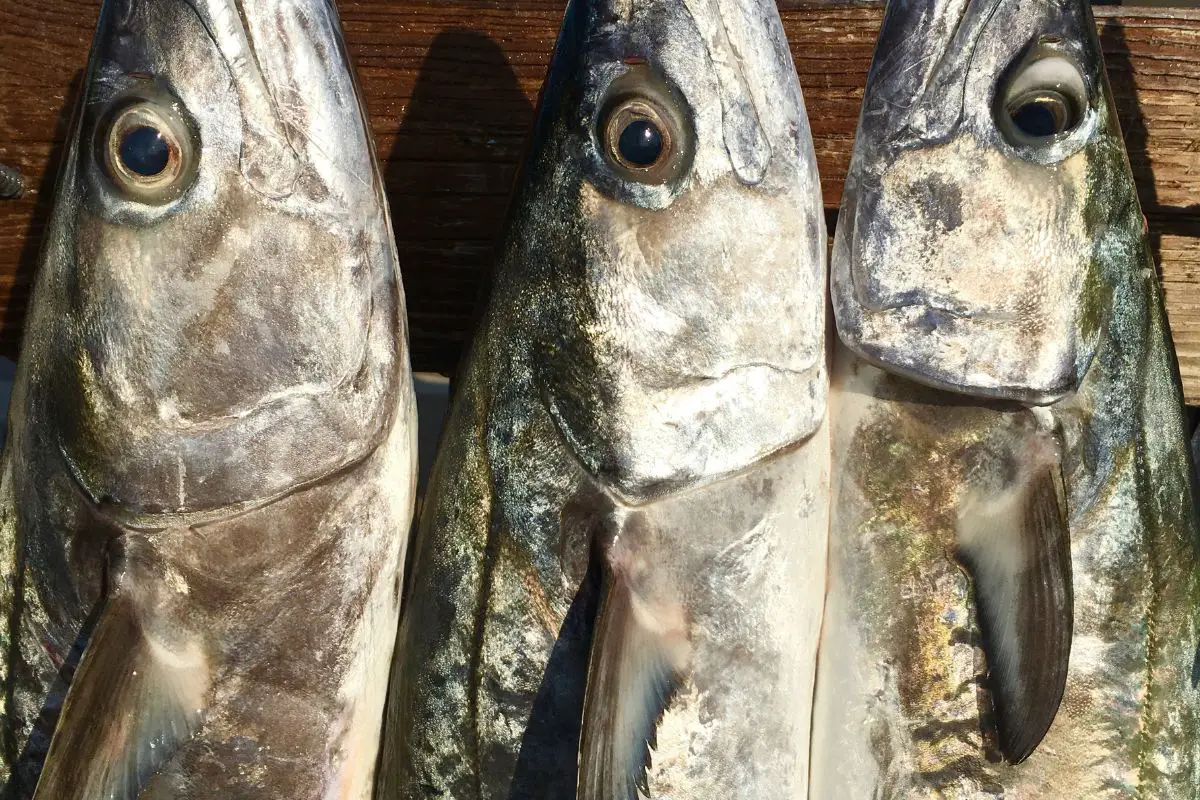
A kingfish, also known as a king mackerel, is a large saltwater fish found in the Atlantic Ocean. The kingfish is closely related to the Spanish mackerel and the wahoo, and can reach up to 6 feet in length and 200 pounds in weight. The kingfish is an important food source, and is also popular among recreational fishermen.
What Does A Kingfish Look Like?
The kingfish has a long, slender body with a bluish-green back and silver sides. The belly is white, and the fins are yellow. The kingfish has a forked tail and small scales.
The kingfish is often confused with the Spanish mackerel, but can be distinguished by its longer body and different coloration.
What is the Kingfish’s habitat?
Kingfish are found in the Atlantic Ocean, from New England to Florida in the United States, and in the Gulf of Mexico. They are also found in the Caribbean Sea, and off the coasts of Africa, Europe, and South America. The kingfish is a highly migratory species.
What is the Kingfish’s diet?
Kingfish are fast-swimming predators that feed on a variety of smaller fish and invertebrates. They have also been known to eat crustaceans, birds, and even other kingfish.
What is the Kingfish’s reproduction?
Kingfish spawn in the spring and summer months. The female fish can lay up to 2 million eggs, which are fertilized by the male fish. The eggs hatch after about a week, and the young fish are called fry.
The fry grow quickly, reaching a length of 12 inches within their first year.
What is the Kingfish’s lifespan?
The kingfish can live for up to 15 years in the wild.
What are the Kingfish’s predators?
The kingfish’s main predators are larger fish, such as sharks, tuna, and billfish. Humans are also a major predator of the kingfish, as they are popular for both commercial and recreational fishing.
